Adam’s Venture: Episode II: Solomon’s Secret – Review
by Adam
|
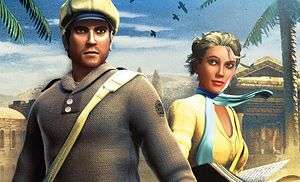 It’s been a very long time since I sat down to play my way through a puzzler. If you include my recent adventures into the various HD remakes of the great Monkey Island and Broken Sword series, the last games I played in the genre were….Monkey Island and Broken Sword. Watching the resurgence of the point ‘n’ click puzzlers has had me itching to sink my logical teeth back into these beautifully drawn worlds and my calling has drawn me towards Vertigo’s second instalment of the Adam’s Venture series, Solomon’s Secret. As the game has my name all over it, it would be rude not to.
It’s been a very long time since I sat down to play my way through a puzzler. If you include my recent adventures into the various HD remakes of the great Monkey Island and Broken Sword series, the last games I played in the genre were….Monkey Island and Broken Sword. Watching the resurgence of the point ‘n’ click puzzlers has had me itching to sink my logical teeth back into these beautifully drawn worlds and my calling has drawn me towards Vertigo’s second instalment of the Adam’s Venture series, Solomon’s Secret. As the game has my name all over it, it would be rude not to.
So far, episodic gaming hasn’t quite lived up to the promise of faster content releases and Adam’s Venture is no exception to that. The first episode was released almost two years ago and anyone who played the game then, hoping for a refresher in the story of Episode I: The Search for the Lost Garden, will be left out in the cold. For newcomers to the story, it’s more of an arctic tundra and piecing together any back story is going to require the same sort of research that I had to go through. So, being one of those that had never played the opening episode, my re-entry to the genre was a little turbulent.
The Search for the Lost Garden focuses around an archaeological search for Eden, the only paradise in theology not to contain Apple Pie. Adam Venture (yes that is his real name) uncovers clues buried in the memoirs of a Knight in the Third Crusades, pointing towards the location of the lost Garden of Eden. I was never much under the impression that Eden was ever lost (probably should have listened in Religious Studies) but the discovery was deemed significant enough for my alter ego to share these findings with his Professor and, for some reason, his girlfriend Evelyn. Having secured financial backing from the Clairvaux Corporation, the three head off to the system of caves believed to be hiding the gateway to Eden, somewhere in the Middle-East. Eventually, Adam discovers the gateway and, despite the warnings of an ominous black goo, unlocks the gates only for the Professor to then turn on Adam and *sigh* Evelyn, siding with the black goo and somehow causing the caves to collapse around them, leaving the Professor on one side of the gate with Adam and *sigh* Evelyn running for their lives.
The second episode begins on the plane that Adam and Evelyn escaped to, with the pair discussing how lucky they were to get out and, listening in on the conversation, the Clairvaux-employed pilot decides that the two are guilty in some way for the Professor’s disappearance and that they should be brought before ‘The Management’ to answer for their crimes. Expecting that this would be the opportunity Vertigo would take to bring people up to date on the game, Adam and Evelyn are delivered to a Clairvaux base, whereby they immediately decide that the best course of action is to escape, bypassing any chance that you’ll ever learn anything about the first game unless you buy it and actually play it. Maybe it’s a clever marketing scheme on the part of the developers, but it feels a lot more like bad design and, for a story driven adventure game, this disappointed me. Here I was, trapped in a prison cell with two characters I knew nothing about, held by a corporation who, for all I know, may have very valid reasons for keeping them, but none of which I’m allowed to know.
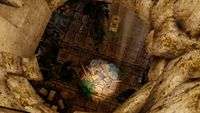 |
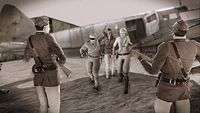 |
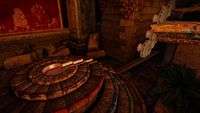 |
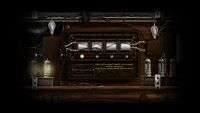 |
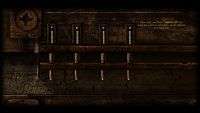 |
 |
The story progresses in much the same fashion: loosely. Escaping the base takes you to Jerusalem where the Clairvaux Corporation are discovered to have set up a dig site. Wanting to investigate what it is they might have found, Adam and Evelyn sneak their way into the camp, uncovering the entrance to Solomon’s Palace before Clairvaux do. At no point was I ever made to understand why Clairvaux was looking for Solomon’s Palace or why it was better that I had found it first. Even the grand reveal at the story’s conclusion didn’t strike me as having been as important a discovery as they had made it out to be, with me instead expecting that I would somehow uncover something bigger than what was found in the first game.
Perhaps it’s unfair of me to judge a game I have entered part way through, and which isn’t complete yet. The whole game just passed by in a bit of blur, going from puzzle to puzzle, environment to environment without ever impacting me in the same way that Broken Sword managed. That’s not to say I didn’t enjoy the game; Adam’s Venture may well fall flat on story, but it makes up for it in other areas.
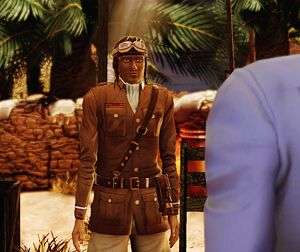 Graphically, Vertigo makes great use of the Unreal 3 Engine. The environments are brilliantly detailed and incredibly well rendered, something I wasn’t expecting from a puzzler. While access is restricted to the few areas Vertigo want the player to explore, the details are definitely still apparent in the distance. Playing through the opening escape section, I was awe struck as the backgrounds sprang to life with guards frantically responding to the alarms you’ve triggered in the base, silhouetted by smoke, screaming orders to one another as they run from building to building. There may be little for the player to physically explore apart from a few extra nooks and crannies tucked away in the natural progression of corridors, but the depth of field is superb and each setting really does benefit from the extra effort invested in creating that.
Graphically, Vertigo makes great use of the Unreal 3 Engine. The environments are brilliantly detailed and incredibly well rendered, something I wasn’t expecting from a puzzler. While access is restricted to the few areas Vertigo want the player to explore, the details are definitely still apparent in the distance. Playing through the opening escape section, I was awe struck as the backgrounds sprang to life with guards frantically responding to the alarms you’ve triggered in the base, silhouetted by smoke, screaming orders to one another as they run from building to building. There may be little for the player to physically explore apart from a few extra nooks and crannies tucked away in the natural progression of corridors, but the depth of field is superb and each setting really does benefit from the extra effort invested in creating that.
The only criticism I can find for the visuals appear in the animations, which feel a little cardboard. Whilst Adam, Evelyn and the rest of the cast are well modelled, you can’t help but look at them as if they suffer from a degenerative mental illness. Adam in particular displays all the mannerisms of a Thunderbird, needlessly bobbing his head from side to side as he talks, gesturing as though his arms were attached to strings and never appearing to make eye contact with Evelyn when they talk. It may seem minor but, given that most of the exposition occurs in conversation between Adam and Evelyn, it does become a little distracting.
This brings me to another part of the game that felt lacking in the polish department – the voice acting in Adam’s Venture is poor. It’s not terrible, and perhaps if it wasn’t for the lax animation, it wouldn’t be so noticeable, but the delivery really doesn’t do the script justice. Interaction between the two protagonists is generally good, with the game never taking itself too seriously and allowing Adam to play the cocky, sarcastic hero whilst leaving all of the balance and logic to Evelyn. Parts of the script are genuinely funny but the delivery just isn’t on the same level. Adam’s voice feels too disconnected from his character and the rapport between the two suffers because of that, with his late 90s attitude being entirely out of place in the game’s 1920s setting.
But of course, none of these are reasons why you’d jump in to a good puzzle game; these games are ultimately played for the puzzles. Wanting to ease you in, Solomon’s Secret initially focuses on the 3D adventure puzzles you’d expect to find in a game like Tomb Raider. Moving boxes to reach new areas, collecting objects, and picking locks provides a good orientation in which to get used to the keyboard only control scheme. After reaching Jerusalem, the puzzles become more complicated, asking you to tap into some long forgotten algebra skills to solve various problems such as assigning multiple keys to the correct locks, balancing pressure in steam engines and re-wiring electrical panels to repair items.
The game also has some truly great puzzles that seem to crop up out of nowhere, requiring you to reach for that discarded envelope that’s been lying on your desk for a week to scratch out an entirely inexplicable series of numbers, dots and squiggles that will make no sense at all to the crazy guy that rifles through your bins. Sadly these are too few and far between with the developers more than happy to repeat the dullest of the puzzles, moving the goalposts just enough to force you to re-think your way through it. Those that the game continually throws at you eventually become an exercise in trial, error and patience, with certain puzzles requiring nothing more than a mashing of the keys to solve, highlighting the developer’s conscious decision to never punish the gamer for any mistakes.
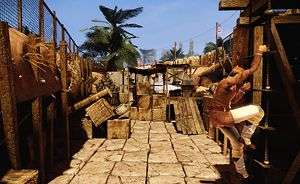 It broke my heart at times that my total lack of effort was still rewarded with progression; I felt like I was cheating the game simply by not trying and, worse still, that the effort wasn’t actually worth it considering the gaping hole where the game’s difficulty should be. In one puzzle in particular, I had the misfortune of suffering a glitch where Adam was unable to reposition a log, bridging a gap to the next log. With a little patience, I was able to bypass this problem with my Unreal Tournament acquired skills in bunny hopping, allowing me to clear the gap with a last minute flourish, landing on just enough of the next log to progress.
It broke my heart at times that my total lack of effort was still rewarded with progression; I felt like I was cheating the game simply by not trying and, worse still, that the effort wasn’t actually worth it considering the gaping hole where the game’s difficulty should be. In one puzzle in particular, I had the misfortune of suffering a glitch where Adam was unable to reposition a log, bridging a gap to the next log. With a little patience, I was able to bypass this problem with my Unreal Tournament acquired skills in bunny hopping, allowing me to clear the gap with a last minute flourish, landing on just enough of the next log to progress.
Sadly the variance just isn’t enough to ever challenge you and the repetition of the easier puzzles feels as lazy to solve as they probably were to create. You will genuinely get a kick out of the tougher puzzles when you solve them, as long as you do so without resorting to the brutish code breaking efforts that I happily resigned myself too. Once completed, the absence of a difficulty setting for the game means that replay value is right up there with a re-run of an episode of Columbo, with no repeatable challenge found beyond that of your own memory.
The lack of difficulty is entirely by design though; Vertigo never wanted this to be a game where you would need to bring some Metal Gear Solid action skills along with you, opting to brand the gameplay as entirely ‘Non-Lethal’. The guards who are desperately searching for you in the escape sequence instantly lose any mental edge they may have had over you should you somehow manage to get caught by wandering into their field of vision. A cry out from Evelyn and the game instantly replants you to the beginning of that particular puzzle, asking you to sneak by once more. Similarly, misadventures down holes or incorrectly solving a puzzle punishes you with the same quick reset, never forcing you to replay any significant content, thereby completely devaluing the threat of death or failure. It tells me that the game isn’t really aimed at me, which sadly begs the question why so much emphasis was put into creating the brilliant environments, rendered in the power of UE3. If Vertigo wanted to simply create a puzzle game with a loose story to take you from puzzle to puzzle, why not invest less time in a simpler engine that the casual audience would appreciate just as much and spend the time saved on creating extra content.
 |
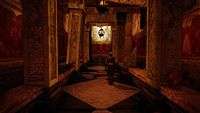 |
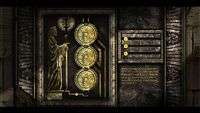 |
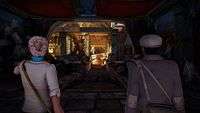 |
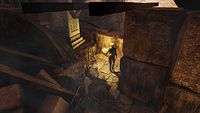 |
 |
Clocking in at a little over two hours, you really would hope that the game would have some replay value to it. I know that the developers ultimately intend for this to be played in sequence with the rest of the chapters, but if fans are going to be made to wait another two years before they can at least have a trilogy to sit and play with, then the individual length of the games just doesn’t feel justified given the £19.99 RRP. It does, however, have five treasure chests to discover, each containing a keyword that you’re told you can input on the game’s website in order to unlock more content but, sadly, the game doesn’t tell you that you actually need all five codes in order to access the content and if, like me, you somehow miss one, you’re really not going to feel like sitting through the game again in order to sniff it out.
Technically, the game is competent enough but not without its flaws. I was never able to resolve the very first glitch I encountered on the main menu, where my mouse cursor was rendered invisible to the human eye. I know it was there as I could eventually cause the options in the middle of the screen to light up given enough patience, but I was instantly restricted to using Up, Down, Enter and Escape in order to twiddle with the settings. The game supports a generous array of screen resolutions, allowing me to enjoy the game in my native 1920×1200 resolution, with windowed mode also freely available for those that prefer to keep one eye on the desktop. Any detailed technical settings are simply restricted to a basic selection of ‘low, medium, high and highest’ with no control given over AA, V-Sync or the touted NVidia PhysX, which is something that I never once saw to be made use of throughout the whole game. Solomon’s Secret is not a fan of the Alt-Tab either, so try and avoid that one unless you quite enjoy looking at the floating mouth and eyeballs of a textureless character that will require a re-launch of the game to correct.
Pros- Enjoyable puzzles
- Great atmosphere in the detailed environments
- Good sense of humour
- No punishment in the gameplay
- Far too short
- Non-inviting story
- Poor animation
- Bad voice acting
- Too many of the puzzles can be solved without trying
Despite all of the negative things I have to say about Adam’s Venture: Episode II, don’t think I didn’t enjoy this return to the adventure puzzler; if it wasn’t for the ridiculously short play time, I’d be happy to give this a glowing recommendation. The dialogue may be a little hammy, the delivery even worse, and the animation sometimes disturbing, but there are just enough glimmers of hope to lead me to believe that the complete game will be an experience to be reckoned with. I really can’t praise the use of the Unreal Engine enough in Solomon’s Secret; it looks fantastic and adds a level of visual polish you don’t see from a studio of Vertigo’s size. Sadly it’s far too noticeable that this came at the cost of the game’s length and if you asked me to give you one reason to avoid Solomon’s Secret, that would be it.
There’s still something about it that has me looking forward to the next chapter and keeping an eye out for the first game in the bargain bins. Whilst Adam and Eve are... oh damn I said it...'Evelyn' are both fairly shallow characters, I enjoyed their company throughout my time in Adam’s Venture and I wouldn’t let them down were they to offer me the chance to go somewhere else with them. The two have a great rapport and it’s just enough to make you care about solving the grand puzzle, even if you’re not one who cares about whatever answers the game’s ending throws up. So long as they’re happy with their earth shattering Da Vinci Code findings, I think I’ll be happy for them so long as they don’t mind me eating an Apple Pie in celebration.
Last five articles by Adam
- Party Pooper
- Battlefield 3 - Review
- Red Orchestra 2: Heroes of Stalingrad - Review
- Burnout CRASH! - Review
- Dead Island - Review















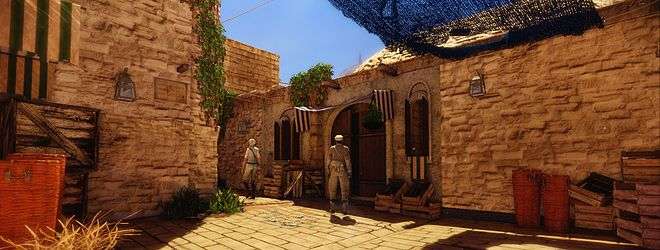
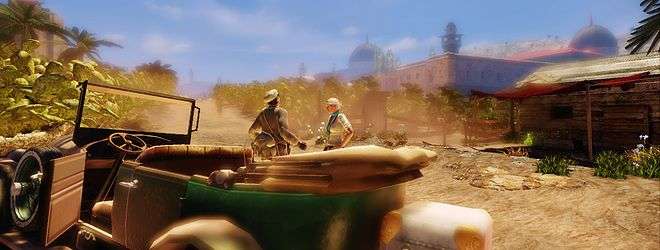





Sounds like an interesting premise and setup, but quite annoying that it’s so overpriced for what results in such a short amount of playing time, so I guess I’m not going to give this a go when Back to the Future is over. Shame, you think they’d have learnt something from the Broken Sword franchise, but I actually play these games for the story and writing as much as I do the puzzles, so I wouldn’t enjoy it anywhere near as much as you managed to.
Great review, Adam. I almost had a go at you for reviewing a game you’re in, then!
2 hours? Pfft what a swizz! Shame as it does look pretty good graphics wise. Nice review mate.
The graphics did seem fairly stunning from the little I had seen, although the characters look rather odd and stiff, which is a shame. The length of this surprised me, even though it is part of a series, the actual game time is still worth a raised eyebrow. On the whole, I think that it may be a good idea to wait for the whole lot to come out, since paying for a small chunk of a game that will be undecipherable without the other parts isn’t too appealing to me. While I have come into a series late (Black Mirror 2 for example), they offered full games, with a well written story that more than adequately brought the player up to speed, which is pretty essential really when the heart of these games is the story.
On the whole though, it sounds like there were a lot of positives to carry out of it, the puzzles in a way being one, which is always great, just a pity that they got a little lazy with them – many point and clicks suffer from this, just like the bad voice acting. Well reviewed, very balanced and in depth – I enjoyed it
The graphics really are something special for a game of it’s ilk and for the studio behind it. Very well detailed environments and I dare say great use of it’s source material (assuming they’re using the Bible correctly, never did understand what else it could be used for other than a doorstop).
I really would like to come back to this and have a look at the full game when every episode is out. Sadly, if it’s taken them this long to produce 2 episodes out of a proposed who knows how many, then it could be a long time before we see another and then you have to ask if they’d be willing to sew it all together into one piece for consumption.
Two hours though at a casual pace really should be a wakeup call for the devs that they should look to create a lot more content for the next one
Thanks for the comments guys, appreciated.
I’m in two minds about this one. In one hand I like the fact that they’ve clearly put some effort into writing something a little different from the norm BUT the ridiculously obvious biblical tie-in with the Adam and Eve just makes me wonder why they even bothered going that far at all. Surely they could have made it more credible to avoid that sort of link, unless there’s a reason that we don’t discover until the end of the series. Who knows.
Again, with the graphics, they look absolutely beautiful in some areas but then in others we have these very odd “Thunderbirds” style characters with arms that are too short, shoulders that are up at their ears and eyes that look like they’ve been carved out of Plasticine. It could be off-putting for me, trying to immerse myself in a storyline when the people attempting to pull me in look so odd.
That said… there were some ropey character models in Risen and I still managed to become absorbed so it may end up being ok!